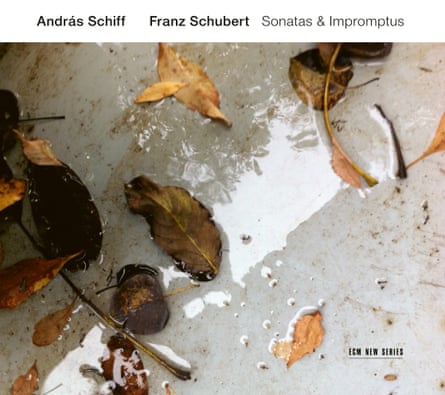In 2010, András Schiff acquired a fortepiano made in Vienna in about 1820 by Franz Brodmann. It had once belonged to the last Austro-Hungarian emperor, Karl I, and had been very carefully renovated in the 1960s. Schiff subsequently placed the instrument on loan in the Beethoven-Haus in Bonn, but not before using it for a series of recordings and recitals.

There have been discs of late Beethoven – the Diabelli Variations and the Op 126 Bagatelles – and, two years ago, a first pair of Schubert sonatas, in G major and B flat, D894 and D960. The latest set now completes Schiff’s survey of the late sonatas with the C minor D958 and A major D959, recorded in the Beethoven-Haus three years ago.
These sonatas are each preceded by a set of smaller pieces, the Four Impromptus D899 and the Three Pieces D946. They offer a résumé of the special tonal qualities of the Brodmann, with the sharply contrasted colours of its treble, mid range and bass registers, the crisply defined articulation its light action makes possible in faster passages, and especially the expressive possibilities opened up by its four pedals, (soft, bassoon, moderator and sustaining), which expand the soundworld in ways that bring new meanings to many passages in Schubert’s piano writing, justifying pedalling instructions in the scores that can seem inappropriate on a modern instrument.
The meat of the two discs comes, naturally, in the two larger-scale works, both of which are full of fascinating, reconsidered detail, with textures that make perfect, potent sense when played on the kind of instrument for which they were conceived. This is the case whether it’s the perfect balance between left and right hands in movements such as the finale of the C minor Sonata, with no danger of the bass becoming overpowering, or the velvety clarity with which the slow movement of the A major opens, enhancing the contrast with its almost operatic central section. There are occasional losses, too – the magisterial tonal weight that a modern piano can bring to the opening and closing moments of the A major Sonata, for instance – but those are outweighed by the insights gained.
Moreover, thanks to this historic piano, Schiff’s playing seems to have lost the fussiness that was sometimes a feature of his interpretations of these works, as if he can now trust the character of the instrument itself to make the expressive points he wants. It’s all much more direct; this is a magnificent, endlessly fascinating pair of discs.

Comments (…)
Sign in or create your Guardian account to join the discussion